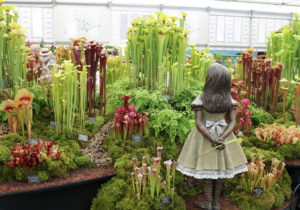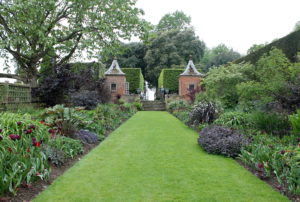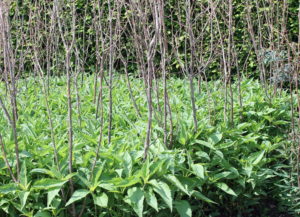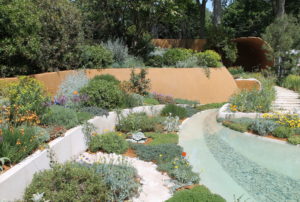Lessons from the Brits
June 4th, 2019
Nobody on the planet gardens better – and enjoys it more – than the British.
England, in particular, is the world’s hot spot for great gardens. Most every town or city there has at least one public garden, adding up to hundreds across a country that’s smaller than many of our states.
The British appreciate plants so much that ordinary people somehow seem to know plants by their botanical names, and even English alleys, graveyards, and restroom entries are adorned with flowers.
I’m just back from leading a 10-day trip to see gardens of England, and I’m hoping some of this British green-thumb enthusiasm will rub off on America.
See George’s photo gallery of pictures from the gardens of England and the 2019 Chelsea Flower Show
We have lots to learn from the Brits when it comes to gardening.
One lesson is that gardening and plants should give us pleasure and satisfaction. We tend to look at gardening as work. They seem to view time in the garden as a creative pastime that, although takes some effort, isn’t really work.
The British also don’t seem to be quite as attached to the lawn as we are.
They have no problem digging up grass to make garden beds, flower-surrounded sitting areas, and the best of all British garden features, the double herbaceous border.
A double herbaceous border involves planting wide, parallel beds of assorted perennials and grasses that bloom in symphonies of changing color throughout the season.
Some of them are 10 to 12 feet wide on both sides – enough for three or four “layers” of perennials, arranged from tallest in back to shortest in front.
Often, the gardeners put together coordinated groupings of five or six plants in these borders, then repeat the groupings down the length of the beds.
It’s a glorious result that brightens a yard much more than our borders of single-line yews, hostas, or arborvitae.
The British also seem to pay attention to and admire plants more than we do.
Follow a Brit in a garden, and you’ll see him or her examine the textures, sniff-check the blooms for fragrance, and maybe critique the plant’s habit as an art critic might evaluate a painting.
To many of us, plants fade into the background. We scarcely notice them unless they’re blaring away in a mass of blooming color.
All of those British public gardens apparently are well visited, too. People flock to them on nice days, as much to enjoy the professionally done handiwork as to pick up techniques and plant ideas for their own yards.
One clever technique I’m planning to copy is the natural (and free) way that many British support their taller plants.
Rather than buy stakes or cages, British gardeners often simply ram pruned branches into the ground and let the growing perennials rest their elbows on the twiggery.
Or they’ll weave their prunings into little woody enclosures that corral would-be floppers like a girdle.
British gardeners also seem to be very keen lately on alliums – ornamental onions that bloom in balls of purple. I’m going to use more of them, too, mainly because deer don’t eat them.
At the Chelsea Flower Show (an incredible annual event of pop-up display gardens and hundreds of vendors and exhibitors), one display that caught my eye used wooden packing crates on top of pallets to make an excellent raised-bed vegetable garden.
And I may experiment with cutting back on wood mulch. We spread yards of the back-breaking stuff every spring while their beds seem to do fine with a light layer of chopped leaves – or nothing at all. Keeping after sprouted weeds ASAP is no doubt key to making that work.
Like us, the British are leaning towards more naturalized gardens, trying to plant more pollinator-friendly gardens, and getting away from spraying.
They’re also getting rid of peat in their potting mixes out of concern of depleting a slowly renewable resource.
The replacement is largely coir, which is chopped-up coconut fibers and available in an increasing number of our potting mixes as well.
One last thing I should mention in defense of us Pennsylvania gardeners is that British gardening conditions are much more favorable.
Their soil isn’t as clayish or rocky, but the big advantage is that they don’t get as hot in summer or as cold in winter. They also get more regular rain.
That plant-friendly climate lets them do cool-preferring plants that burn out for us (lupines, delphiniums, blue poppies, primrose, lady’s mantle, heather, and the like) as well as warm-preferrers that freeze out in our winters (gunnera, southern camellias, osmanthus, jasmine, and even some palms).
At least they’re taking good advantage of their advantages.











